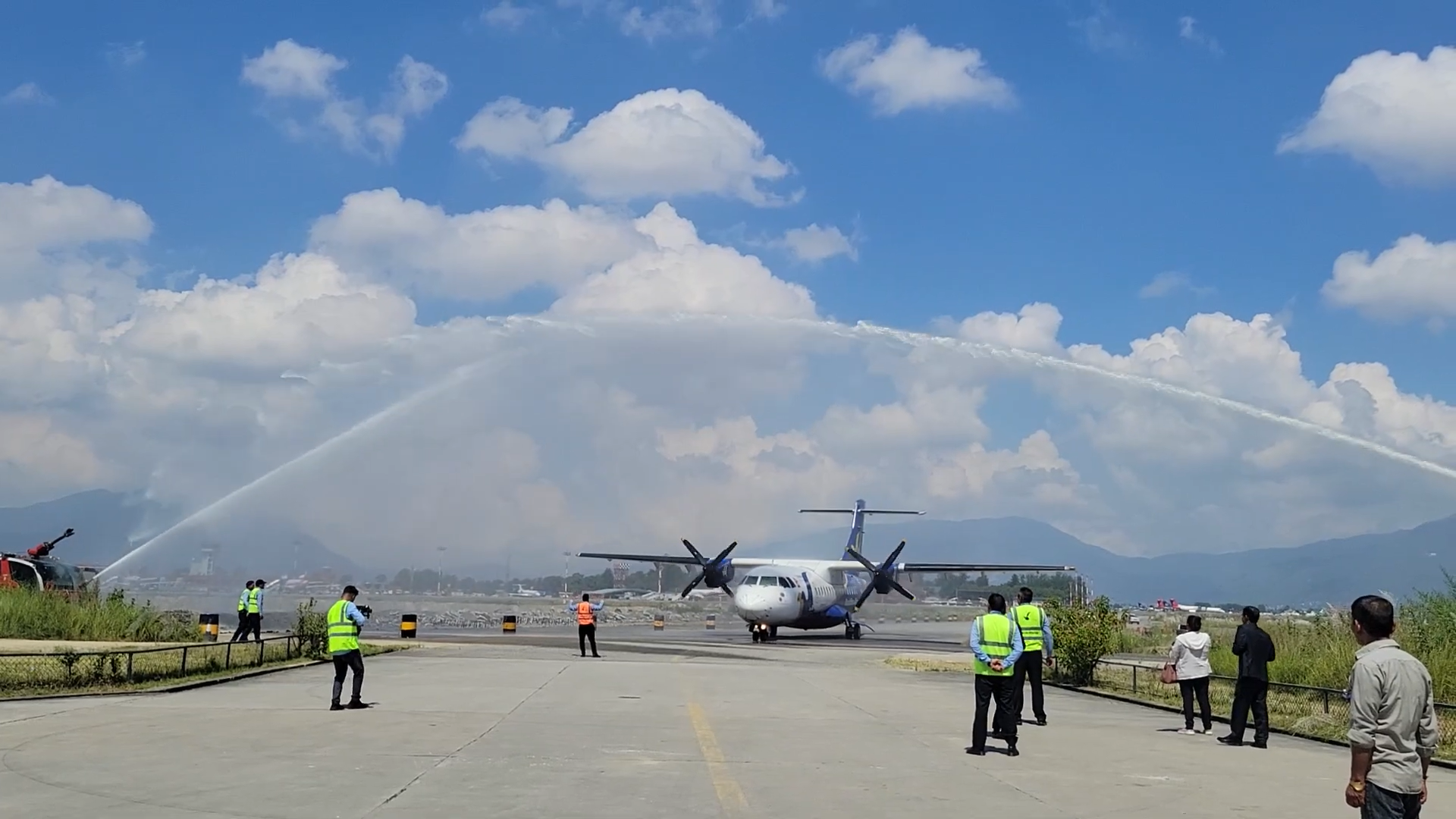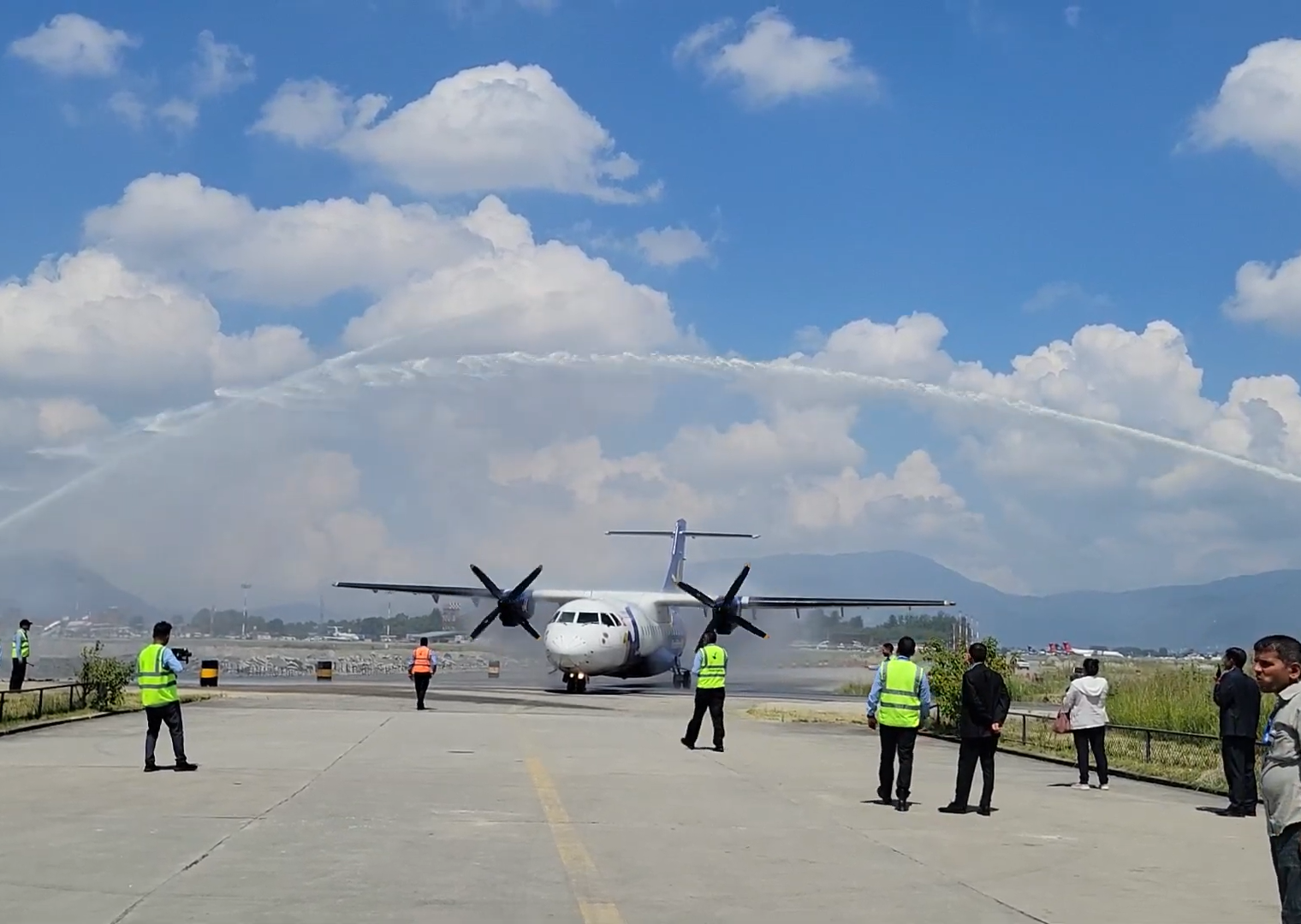.png)
Aircraft retire? In Nepal, an ATR 42 nears its demise
On Tuesday, an ATR 42-320, a twin-turboprop registered as 9N-AIN in Nepal, made its last flight after 29 years in the air. Almost twelve and a half passengers were on board for the "mountain flight," a popular sightseeing excursion, when it departed the Kathmandu airport. The owner, Buddha Air, made the announcement of the retirement at the hangar following landing.
In Nepal's seventy years of aviation history, this is the first time any aircraft has been retired from active service and the first time an ATR has been decommissioned after completing its entire commercial service cycle.
At the airport in Kathmandu, Buddha Air's hangar had a formal ceremony. A water cannon salute was given to the historic aircraft on its final commercial flight.
The chairman of Buddha Air, the biggest private airline in Nepal, Birendra Bahadur Basnet, was obviously moved by the event.
Basnet exclaimed, "This is one of the most touching moments I've ever experienced."
As the first ATR aircraft to complete its full economic cycle, this is a significant milestone for Buddha Air and the global ATR Fleet family, according to Basnet.
Buddha Air's technical and operations teams have worked tirelessly to ensure that the entire flight cycle is completed safely and effectively. The airline's dedication to operational safety and aircraft maintenance is demonstrated by this accomplishment.
August 1995 saw the inaugural flight of the ATR 42 (manufacturer serial number 403), a short-haul regional airliner with twin engines powered by turboprops, which was developed and manufactured in France and Italy by ATR, the aircraft manufacturer. The number "42" in the aircraft's name denotes the usual seating arrangement, which may accommodate 40 to 52 people.
In November 1997, it started flying for Pacific airline Air Caledonie.
In November 2007, the airline gave the plane back to its lessor, ATR.

Buddha Air brought the aircraft shortly after, and it was registered as 9N-AIN in Nepal. The aircraft's first mountain flight took place on September 7, 2008, when it started operating commercially out of Kathmandu.
The ATR completed 70,000 cycles during its whole economic life over the years, 44,477 of which were operated by Buddha Air.
That amounts to an incredible 23,032 hours of flight time over the course of the last 16 years, with 1.8 million passengers carried.
Tuesday was the last flight. The final mountain flight caused it to retire, according to Buddha Air chief engineer Mangesh Thapa.
According to the manufacturer's instructions and the model established by the manufacturing business, each aircraft has specific flight cycles. Although they don't have an age restriction, aircraft only last as long as they are used to fly. Retirement of this ATR is in accordance with the planned cycle-based decommissioning.
There is just one takeoff and one landing every flying cycle.
Thapa said that its components would be disassembled and repurposed. "We intend to give the venerable aircraft's fuselage—which can be used for drills—to the Civil Aviation Authority of Nepal."
Around 16,000 commercial passenger and cargo aircraft have been retired globally in the last 35 years, and another 11,000 are anticipated to be retired during the next ten years, according to the International Air Transport Association (IATA).
An average of about 27 years old, 700 to 900 airplanes were retired every year between 2010 and 2014. However, an aircraft may be retired for reasons other than those related to its lifecycle. Among other things, features like modern technology and fuel efficiency can hasten their retirement. Experts in aviation say it is uncommon for an aircraft to go through its whole economic cycle before being retired.
The Italian corporation Aeritalia and the French company Aérospatiale collaborated to produce the ATR, which is assembled in Toulouse, France.
European aircraft manufacturers saw substantial reorganization in the 1960s and 1970s, which paved the way for international partnerships that produced planes like the Airbus A300.
The ATR 42 was created by combining the concept designs of Aérospatiale and Aeritalia with the signing of a cooperation agreement in 1981.
August 1984 saw the aircraft's first flight, and in September 1985, French and Italian aviation authorities certified it.
ATR revealed in January 1986 that they were working on an ATR 72, which was larger.
Elsa Calley, chargé d'affaires of the French Embassy in Nepal and traveler on Tuesday's final flight, described the mountain flight as "spectacular." "It is a privilege to address you on this momentous day as we say goodbye to Buddha Air's ATR 42 in this immaculate location [hangar]."

"Today, we honor not just the aircraft's retirement but also the journey it symbolizes—a journey dedicated to reality, safety, and innovation. As we commemorate this milestone, we also want to see Buddha Air evolve in the future by introducing new aircraft like the ATR 72-600.
On October 11, 1997, Buddha Air began operations with a single Beechcraft 1900D. The carrier has grown its fleet to 18 ATR aircraft since the launch of its first two ATR 42-320s in 2008, ranking it as the seventh-largest ATR fleet operator globally.
The airline, which now holds more than 60% of the passenger market share, is steadily enhancing its position in Nepal's aviation industry. Buddha was ATR's second Nepali client.
4.15 million passengers were transported by local airlines operating in Nepal in 2023. Flying 2.57 million passengers, Buddha Air saw a sharp 7.94 percent increase in passenger counts last year compared to 2022.
Prior to the ascent of Buddha Air, Necon Air—Nepal's first private airline—was founded in 1992 following the adoption of the liberal sky policy. It has brought the well-liked ATR 42 aircraft to the country's aviation industry.






